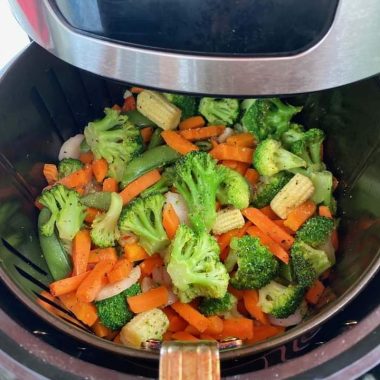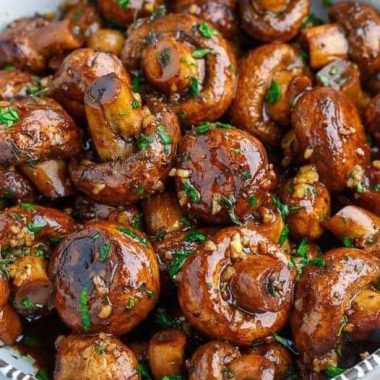The safest way to store garlic through canning is by using a vinegar solution or a brine solution. Here’s a step-by-step guide for canning garlic in vinegar or brine, along with some key safety tips.
Ingredients & Equipment
- Fresh garlic bulbs (peeled or whole cloves)
- Vinegar (white vinegar or apple cider vinegar with at least 5% acidity)
- Water (if using a brine)
- Salt (if using a brine)
- Canning jars (typically pint or half-pint size)
- Canning lids and rings
- Large pot for blanching (if desired)
- Large pot for processing the jars
- A pressure canner or water bath canner (depending on the recipe used)
Basic Process: Canning Garlic in Vinegar
Step 1: Prepare the Garlic
- Peel the Garlic: Peel the garlic cloves, or if you prefer, you can keep them whole. If you’re keeping the cloves whole, you may want to blanch them briefly in boiling water (about 2-3 minutes) to soften them slightly and make the skins easier to remove.
- Trim the Ends: Trim off the root ends of the garlic cloves.
Step 2: Prepare the Vinegar Solution
- In a pot, combine vinegar and water in a ratio of 2:1 (2 parts vinegar to 1 part water) to ensure the solution is acidic enough for safe preservation. You can use white vinegar, apple cider vinegar, or a blend of both. The vinegar should have a minimum of 5% acidity.
- Bring the mixture to a simmer, not a boil, and stir occasionally.
Step 3: Pack the Jars
- Sterilize your canning jars by washing them in hot, soapy water, then placing them in a hot water bath or oven to sterilize.
- Pack the garlic cloves into the jars tightly, but not so tight that the cloves are bruised or damaged.
- Pour the hot vinegar solution over the garlic, leaving about 1/2 inch of headspace at the top of each jar.
- If desired, add a pinch of salt to each jar for flavor. You can also add herbs and spices like bay leaves, peppercorns, or dill for extra flavor.
Step 4: Process the Jars
- Wipe the rims of the jars with a clean cloth to ensure there is no residue.
- Place the sterilized canning lids on the jars and screw on the rings just until they are fingertip tight. Do not overtighten.
- Water Bath Canning: If you’re using a water bath canning method, submerge the jars in boiling water and process for about 10-15 minutes. Ensure that the water covers the jars by at least 1 inch.
- Pressure Canning (optional): Some recipes call for pressure canning garlic in vinegar, especially if you’re concerned about safety and want to ensure the preservation of garlic at a higher temperature. Consult the USDA guidelines or trusted sources for precise pressure canning times based on your altitude.
Step 5: Cooling & Storing
- Once the jars are processed, carefully remove them from the canner and place them on a clean towel or cooling rack. Let them cool completely.
- Check the seals of the jars after they’ve cooled. The lids should not be able to be pressed down (if the lid pops back up, the jar is not sealed properly).
- Store the sealed jars in a cool, dark place for up to a year. Once opened, garlic stored in vinegar should be kept in the refrigerator.
Canning Garlic in Brine
Another method for preserving garlic is using a brine solution (saltwater). The process is similar to vinegar, but you’ll make a saltwater brine instead.
Ingredients for Brine:
- 1/4 cup salt (non-iodized, such as kosher or pickling salt)
- 4 cups water
Steps:
- Prepare the Garlic: Follow the same steps as above to peel and trim the garlic.
- Make the Brine: Dissolve the salt in the water to create the brine. Bring it to a boil.
- Pack the Jars: Pack the garlic cloves into the jars.
- Add Brine: Pour the hot brine over the garlic, leaving 1/2 inch of headspace.
- Process the Jars: Follow the same canning method as with the vinegar solution, either water bath canning or pressure canning.
Important Canning Safety Tips
- Do not can garlic in oil: Garlic packed in oil has been linked to botulism outbreaks, and home canning recipes involving oil are not safe unless they have been specifically tested.
- Do not use low-acid ingredients without proper treatment: Garlic on its own is low-acid, so it must be processed with an acid solution (like vinegar) or salt brine to make it safe for canning.
- Use fresh, high-quality garlic: Overripe or damaged garlic can negatively affect both the flavor and preservation process.
- Monitor processing time and temperature: The times provided are essential for food safety and help prevent the growth of harmful microorganisms.
Storage
- Sealed jars: When properly canned, garlic in vinegar or brine can be stored for up to a year in a cool, dark, and dry place.
- Refrigerate after opening: Once opened, store the garlic in the refrigerator and use within a few weeks.
By following these steps and safety guidelines, you can preserve garlic for long-term storage through canning. Always follow trusted, tested recipes for safe preservation.


